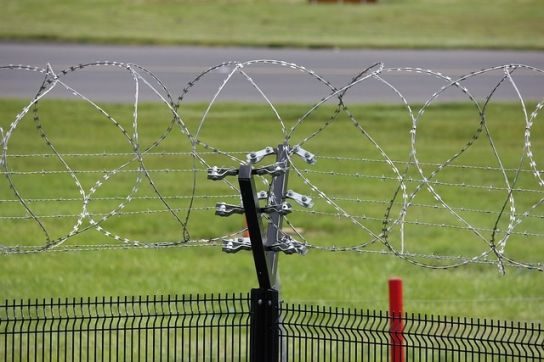In today’s world, ensuring the security of our homes and properties has become a top priority. One effective solution that has gained popularity is electric fences. These fences provide a reliable and robust security measure to keep intruders at bay.
Electric fences can be the best option for you to ensure your place’s security while knowing no one will be seriously harmed in the process. So, you must know how to integrate electric fences which you’ll find .
If you’re considering installing an electric fence, this article will guide you through finding the perfect solution for your security needs.

Table of Contents
Benefits of Electric Fences
Electric fences provide a range of benefits that make them an attractive security solution for many property owners. Here are some key advantages:
● Enhanced deterrence
Electric fences act as a strong deterrent against potential intruders, both human and animal. The electric shock they deliver upon contact is a powerful deterrent, discouraging trespassers from attempting to breach the perimeter.
● Versatility
Electric fences can be customized to suit different security needs. Whether you need to secure a residential property, a commercial facility, or even agricultural land, electric fences can be adapted to provide the level of protection required.
● Cost-effectiveness
Unlike traditional security measures like walls or barbed wire, electric fences offer a cost-effective option. Once installed, the maintenance costs are relatively low, making them a long-term investment for your security needs.
● Minimal damage
Electric fences provide a non-lethal means of protection. While they deliver a strong shock, it is designed to deter rather than cause harm. This makes them a humane option while still ensuring the safety and security of your property.
While they deliver a strong shock, it is designed to deter rather than cause harm, making them a humane option while still ensuring the safety and security of your property.
Assessing Your Security Requirements
Before diving into the details of electric fences, assessing your security requirements is essential. Consider the following factors:
- Property size: Determine the perimeter length and the area you want to protect. This will help determine the length and quantity of electric fence materials needed.
- Threat level: Evaluate the level of security you require based on the potential threats in your area. This could range from deterring animals to preventing unauthorized access by humans.
- Budget: Set a realistic budget for your electric fence project. This will help you narrow down your options and make informed decisions.
Integrating Electric Fences with Existing Security Systems
If you already have an established security system, you may wonder if electric fences can be seamlessly integrated. The answer is a resounding yes! Electric fences can be easily incorporated into security measures to create a comprehensive protection system.
One way to integrate electric fences is by connecting them to alarm systems. When someone attempts to breach the fence, the alarm system is triggered, instantly alerting you to the potential threat. This immediate response capability enhances overall security and provides additional protection for your property.
Surveillance cameras can also be integrated with electric fences, further enhancing the monitoring capabilities. By strategically placing cameras along the fence line, any breach attempts can be visually recorded, providing valuable evidence and aiding in the identification of intruders.
Also, electric fences can be integrated with access control systems. This means that only authorized individuals can enter the protected area, further fortifying the security of your property.
Access control systems such as keycard readers or biometric scanners can seamlessly incorporate into the electric fence setup, ensuring that only those with proper authorization can gain entry.
Choosing the Right Electric Fence System
Now that you clearly understand your security requirements, it’s time to select the right electric fence system. Consider the following aspects:
- Energizer type: The energizer is the heart of your electric fence system. Choose between battery-powered, mains-powered, or solar-powered energizers based on location, availability, and preference.
- Fence design: Electric fences come in various designs, such as tape, wire, or mesh. Each design has advantages, so choose one that suits your needs. For instance, tape fences are more visible, while wire fences are better for longer distances.
- Voltage requirements: Different animals and intruders have varying tolerance levels to electric shocks. Consider the voltage requirements based on the threats you want to deter. High-security areas might require higher voltage levels.
Some electric fence systems offer additional features like alarms, monitoring systems, or integration with security cameras. Evaluate these features and determine if they align with your security needs.
Installation and Maintenance
Proper installation and maintenance are crucial for long-term effectiveness once you’ve selected the right electric fence system. Follow these steps:
- Seek professional assistance: Unless you have experience with electric fence installation, hiring a professional installer is best. They will ensure proper grounding, connections, and compliance with local regulations.
- Regular maintenance: Electric fences require regular maintenance to ensure optimal performance. Inspect the fence periodically, checking for any damage or wear. Trim vegetation around the fence to prevent interference and ensure proper voltage distribution.
- Education and warning signs: Educate your family members, employees, or tenants about the presence and dangers of the electric fence. Install warning signs at appropriate intervals to alert potential intruders and avoid accidents.
Compliance with Local Regulations
Before installing an electric fence, it’s important to familiarize yourself with local regulations. Compliance ensures that your fence is legal and safe. Consider the following:
- Permits and permissions: Check if your local authorities require permits or permissions for electric fence installation. Obtain any necessary documentation before starting the project.
- Height and visibility requirements: Local regulations might specify the minimum height and visibility requirements for electric fences. Ensure your fence meets these standards to avoid any legal complications.
- Electromagnetic interference: Some areas might restrict the use of certain electric fences due to potential electromagnetic interference with nearby equipment or systems. Be aware of these limitations to prevent any issues.
Conclusion
Electric fences offer an effective and reliable security solution for your property by assessing your security requirements, choosing the right system, and following proper installation and maintenance procedures.
You can create a comprehensive and robust security solution by integrating electric fences with existing security systems. The combination of electric fences with alarm systems, surveillance cameras, and access control systems enhances the overall effectiveness of your security measures.
Without any further ado, install an integration that provides peace of mind, knowing your property is well-protected and monitored around the clock.




